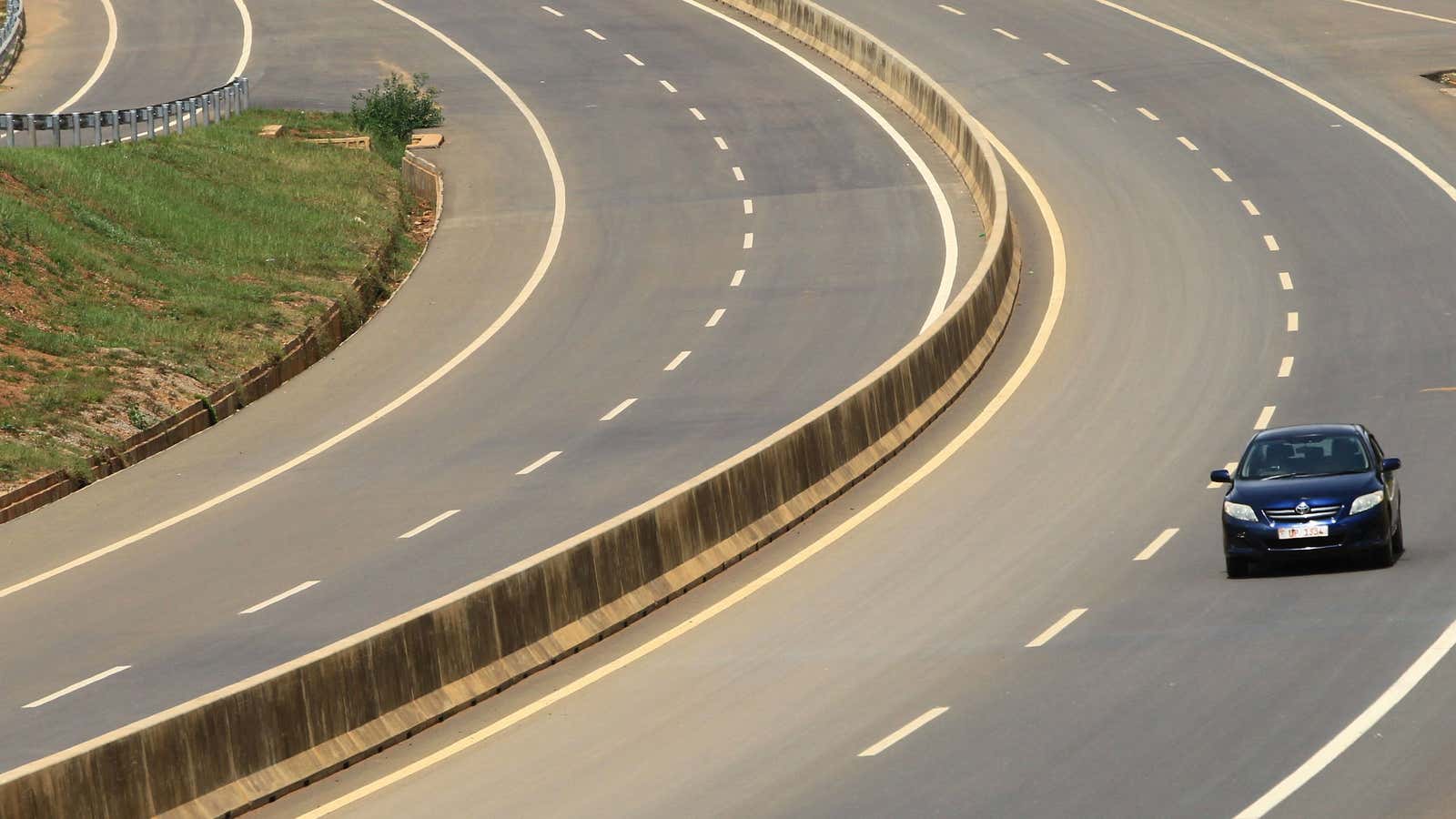The powerful idea African countries and cities should be connected with strong transportation networks, particularly by road and rail, is one that can sometimes be over-romanticized as a pan-African vision of the independence struggle. It has roots in colonialists’ vision for connecting the territories they controlled.
Governments, multilateral agencies and development-financing officials are usually pretty clear-eyed about the huge economic potential that could be unlocked by getting Africa better connected across its often arbitrary colonial-era borders.
Doing this is easier said than done among 54 countries spread across a land mass that could take in China, India, the United States mainland and still have room for most of Europe.
“African development hinges on a maddening paradox: Its greatest asset—the sheer size and diversity of its landscape—is also the greatest barrier to its development,” writes South African academic Cobus van Staden, in a paper on the possibility of an East-West transport link in Africa. He notes the difficulty of moving goods “weighs down” trade on the continent. And it also curtails most of the benefits of international trade.
The cost of transportation is on average 50% to 175% more than in many parts of the world due to poor infrastructure, estimates KPMG. Poor infrastructure also means the impact of years of trade liberalization and tariff reductions has been significantly limited by the cost of moving goods within African countries and between neighbors. The high cost of moving goods from or to ports eats into the benefits of free and lower-tariff trade.
There’s been an official plan for a pan-African road network since 1971, with the UN Economic Commission for Africa envisioning significant boost to trade. The Trans-African Highway is an ambitious network of nine highways traversing the continent for 60,000 kilometers. They include routes from Dakar to Cairo (8,636 km), Lagos to Mombasa (6,260 km) and from Cape to Cairo (8,860 km).
This is where China comes in
Why don’t we have these highways some 60 years after independence? Funding, for one thing. The Chinese government, in line with its Belt and Road Initiative, sees the potential and opportunity of 54 markets, with more than one billion more accessible consumers. As van Staden notes, China helped with the one completed highway, Highway No.5, which runs for 4,500 km through seven countries from Dakar, Senegal to N’Djamena, Chad.
Many analysts are rightly concerned about African governments’ rising debt to China, a topic that was top of mind when Chinese president Xi Jinping visited four countries last week. These concerns are weighed against the potential economic return of better infrastructure, rather than whether these networks fulfill the long-held pan-African dream.
Xi signed up Senegal as the first West African country to be part of the BRI. Before now the focus has been on the Africa’s east coast, seen as strategically important for China’s transport of goods. Senegal’s minister for Chinese affairs, Ibrahim Diong told CNBC his county’s western location is great for exports. “For any Chinese companies that would like to export to the US, you cannot get better than Senegal,” Diong is quoted as saying.
That statement only works if Chinese companies are making items for export in the region. To that end, Senegal is also working on a $140-million project in an expanded town, Diamniadio, on the outskirts of Dakar–thanks in part to investment from Chinese firms looking to bring manufacturing jobs to Senegal.
